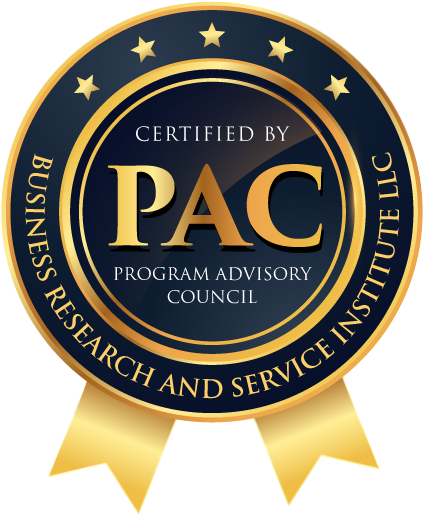Sales and Operations Planning (S&OP) might sound like one of those jargon-heavy business terms, but it’s actually a cornerstone of successful operations in many industries.
It’s all about aligning the sales and production sides of a business to ensure everything runs smoothly.
Why should you care?
Well, a well-oiled S&OP process can make the difference between meeting your quarterly goals and falling short.
Let’s dive in to see what S&OP is all about and why it matters.
Understanding Sales and Operations Planning (S&OP)
At its core, Sales and Operations Planning (S&OP) is a strategic business management process.
It aims to balance and synchronize a company’s supply and demand by integrating planning across different functions—mainly sales, marketing, demand planning, production, and finance.
The goal is to create a unified plan that ensures the company can meet customer demand in the most efficient and profitable way possible.
Key Objectives of S&OP
The primary objectives of S&OP are to improve forecasting accuracy, optimize inventory levels, enhance customer satisfaction, and ultimately drive better financial performance.
It’s about getting everyone on the same page and making informed decisions based on comprehensive data and cross-functional collaboration.
Components of S&OP
Demand Planning
Demand planning involves forecasting future customer demand using historical data, market analysis, and other predictive analytics tools.
Accurate demand planning is crucial for ensuring that the supply chain can meet customer needs without overproducing or underproducing.
Supply Planning
Supply planning focuses on ensuring that the company can meet the forecasted demand.
This includes managing production schedules, procurement processes, and inventory levels.
It’s about having the right products in the right place at the right time.
Inventory Management
Effective inventory management is a key component of S&OP.
It involves maintaining optimal inventory levels to avoid stockouts or excess stock, which can tie up capital and increase holding costs.
This balance helps in meeting customer demands promptly while minimizing costs.
Financial Integration
S&OP also integrates financial planning to ensure that the plans are financially viable.
This means aligning the operational plans with the company’s financial goals and budgets, ensuring that the strategies are both profitable and sustainable.
The S&OP Process
Data Gathering
The first step in the S&OP process is collecting data from various sources.
This includes sales data, inventory levels, production capacity, and financial data.
Accurate and comprehensive data is the foundation of effective S&OP.
Demand Planning Meeting
In this meeting, the team reviews historical sales data, market trends, and forecasts to develop a demand plan.
The goal is to create a realistic and achievable demand forecast.
Supply Planning Meeting
The supply planning meeting focuses on how to meet the demand forecast.
This involves reviewing production schedules, capacity constraints, and procurement plans.
The objective is to ensure that supply can meet demand efficiently.
Pre-S&OP Meeting
The pre-S&OP meeting is where the demand and supply plans are reconciled.
Any discrepancies are identified and addressed.
This meeting sets the stage for the executive S&OP meeting.
Executive S&OP Meeting
The executive S&OP meeting is the final step where senior management reviews and approves the integrated plan.
This meeting ensures that the plan aligns with the company’s strategic goals and financial objectives.
Benefits of Implementing S&OP
Improved Forecast Accuracy
One of the biggest benefits of S&OP is improved forecast accuracy.
By integrating data from different functions and using sophisticated forecasting tools, companies can create more accurate and reliable demand forecasts.
Enhanced Collaboration
S&OP fosters better collaboration across different functions within the organization.
Sales, marketing, production, and finance teams work together, breaking down silos and improving communication.
Better Inventory Management
Effective S&OP helps in optimizing inventory levels, reducing both stockouts and excess inventory.
This leads to lower inventory holding costs and improved cash flow.
Increased Customer Satisfaction
With better demand planning and supply chain coordination, companies can meet customer demands more effectively.
This leads to higher customer satisfaction and loyalty.
Financial Benefits
Ultimately, S&OP drives better financial performance.
By aligning operational plans with financial goals, companies can improve profitability and achieve sustainable growth.
Challenges in S&OP Implementation
Data Accuracy
One of the main challenges in S&OP implementation is ensuring data accuracy.
Inaccurate data can lead to flawed forecasts and poor decision-making.
Cross-Functional Collaboration
Achieving effective cross-functional collaboration can be challenging, especially in large organizations with complex structures.
It requires a cultural shift and strong leadership.
Technology Integration
Integrating the right technology to support S&OP can be a hurdle.
Companies need robust software solutions that can handle large volumes of data and provide accurate insights.
Change Management
Implementing S&OP often requires significant changes in processes and behaviors.
Managing this change effectively is crucial for successful implementation.
S&OP and Technology
Role of Software in S&OP
Technology plays a critical role in S&OP by providing the tools needed to collect, analyze, and share data.
Software solutions can automate many of the processes involved, making S&OP more efficient and accurate.
Popular S&OP Tools
Some popular S&OP tools include SAP Integrated Business Planning (IBP), Oracle’s S&OP Cloud, and Kinaxis RapidResponse.
These tools offer a range of features to support demand planning, supply planning, and financial integration.
Future Trends in S&OP Technology
Emerging trends in S&OP technology include the use of artificial intelligence (AI) and machine learning to improve forecasting accuracy, as well as increased integration with other business systems like ERP and CRM.
Best Practices for Effective S&OP
Regular Meetings and Reviews
Holding regular S&OP meetings and reviews ensures that the plans remain relevant and up-to-date.
It allows for continuous monitoring and adjustment as needed.
Clear Communication Channels
Establishing clear communication channels is essential for effective collaboration.
This helps in ensuring that all stakeholders are on the same page and can contribute effectively.
Continuous Improvement
S&OP should be a dynamic process with a focus on continuous improvement.
Regularly reviewing and refining the process helps in adapting to changing business conditions.
Aligning S&OP with Business Strategy
Aligning S&OP with the overall business strategy ensures that the operational plans support the company’s long-term goals and objectives.
How to Get Started with S&OP
Initial Steps
To get started with S&OP, begin by assessing your current planning processes and identifying areas for improvement.
Gather a cross-functional team to lead the initiative.
Building the Right Team
Building the right team is crucial for successful S&OP implementation.
This team should include representatives from sales, marketing, production, finance, and IT.
Setting Clear Goals and Metrics
Setting clear goals and metrics helps in measuring the success of the S&OP process.
These goals should be aligned with the company’s strategic objectives.
The Role of Leadership in S&OP
Executive Support
Executive support is vital for the success of S&OP.
Senior leaders should champion the process and ensure that it receives the necessary resources and attention.
Leadership Involvement
Leadership involvement is key to fostering a culture of collaboration and continuous improvement.
Leaders should be actively involved in the S&OP meetings and decision-making process.
Fostering a Collaborative Culture
Creating a collaborative culture is essential for effective S&OP.
This involves breaking down silos and encouraging open communication and teamwork.
S&OP in a Global Context
Managing Global Supply Chains
In a global context, S&OP helps in managing complex supply chains that span multiple countries and regions.
It provides a framework for coordinating activities across different locations.
Cultural Considerations
Cultural considerations play a significant role in global S&OP.
Understanding and respecting cultural differences is important for effective collaboration.
Regulatory Challenges
Global S&OP also involves navigating regulatory challenges, including compliance with local laws and regulations.
This requires a thorough understanding of the regulatory environment in each region.
The Future of S&OP
Emerging Trends
Emerging trends in S&OP include the use of advanced analytics, AI, and machine learning to enhance forecasting and decision-making processes.
These technologies offer new opportunities for improving the accuracy and efficiency of S&OP.
Impact of AI and Machine Learning
AI and machine learning are set to revolutionize S&OP by providing more accurate and timely insights.
These technologies can analyze vast amounts of data and identify patterns that humans might miss.
Evolving Business Models
As business models evolve, so too will S&OP.
Companies will need to adapt their S&OP processes to remain competitive in a rapidly changing business environment.
Conclusion
In conclusion, Sales and Operations Planning (S&OP) is a critical process for aligning a company’s supply and demand, improving forecast accuracy, and driving better financial performance.
While there are challenges in implementing S&OP, the benefits far outweigh the difficulties.
By leveraging technology and fostering a collaborative culture, companies can achieve significant improvements in their operations and customer satisfaction.
FAQs
What industries benefit most from S&OP?
Industries with complex supply chains and fluctuating demand, such as manufacturing, retail, and FMCG, benefit the most from S&OP.
How often should S&OP meetings be held?
S&OP meetings are typically held monthly to review and adjust plans based on the latest data and market conditions.
What is the difference between S&OP and IBP?
Integrated Business Planning (IBP) is an evolution of S&OP that includes a broader scope, incorporating strategic and financial planning along with operational planning.
Can small businesses benefit from S&OP?
Yes, small businesses can benefit from S&OP by improving their demand forecasting, inventory management, and overall operational efficiency.
How does S&OP affect customer satisfaction?
By ensuring that supply meets demand efficiently, S&OP helps in delivering products on time, reducing stockouts, and enhancing overall customer satisfaction.

Aftab Khan is a logistics specialist with over forty years of experience in all aspects of supply chain and logistics management. He is an engineer by training and holds an MBA, besides several certifications from APICS/ASCM, ISCEA, and BRASI. Mr. Khan is the Executive Director of Business Research and Service Institute LLC, USA.








